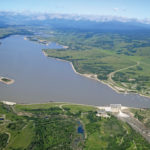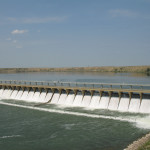
The threat of invasive mussels draws ever closer to Alberta
Water officials on high alert after positive samples for larval mussels were found in two nearby Montana reservoirs last year

Working with producers top priority for irrigation research chair
Willemijn Appels wants to focus on research projects ‘that will really benefit local producers'

Irrigation not forgotten in Bow River flood mitigation agreement
Keeping water levels lower behind the Ghost Dam provides capacity for capturing flood waters, but can mean less water is available later on

Authorities up efforts in the battle to keep out invasive mussels
More inspections, tougher enforcement, and lots of education key to keeping Alberta waterways clear of quagga and zebra mussels

We think we have water in abundance, but that’s just not so
We need to start appreciating how precious each litre of fresh water is, and how much of it we are using

Irrigation technology centre has a wide range of research
Whether it’s research on potatoes, sugar beets, infrared sensors or nozzles, the goal is to get more crop per drop

Economic study shows irrigation pays big dividends
Irrigation adds about $3.6 billion to the provincial economy each year and has the potential to do even more

Drought years are proof that there’s more ‘crop per drop’
Two very dry years show that investments by both farmers and irrigation districts have greatly increased water-use efficiency


